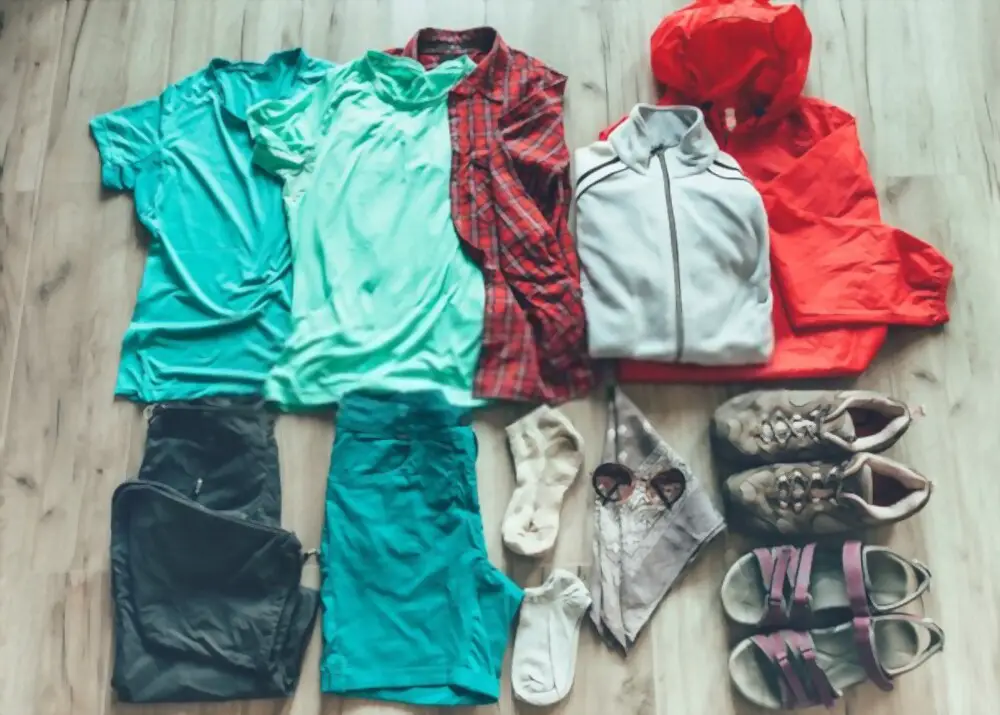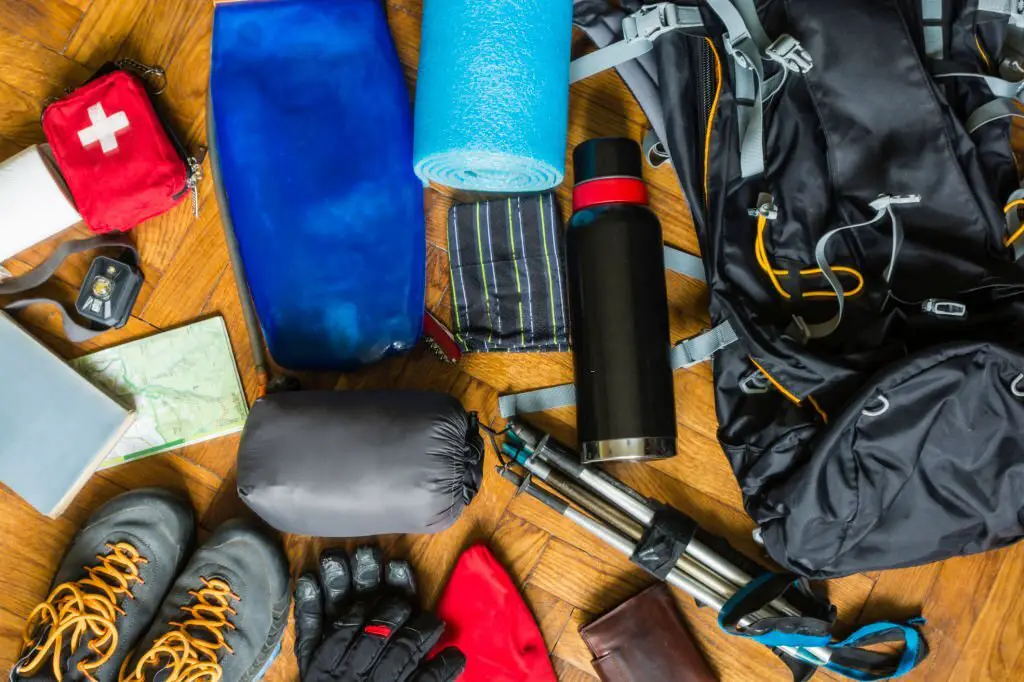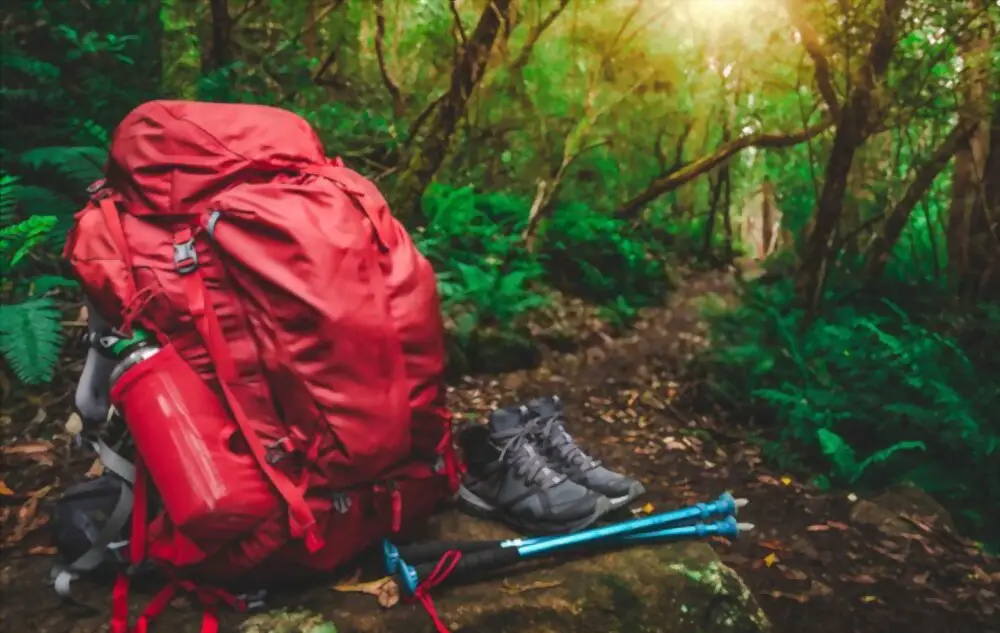If you’re planning on hitting the trails for a hike, one of the most important things to consider is what to wear on a hike. Not only do you want to be comfortable during your trek, but you also want to stay safe and protect your skin from the elements. So, what should you wear on a hike?
The Importance of Proper Hiking Clothing
First things first, let’s talk about why it’s so important to wear the right clothing when hiking. The right clothing can protect you from sunburn, insect bites, and scratches from plants. It can also keep you warm and dry in inclement weather. On the other hand, wearing the wrong clothes can lead to discomfort, blisters, and even injury.

When choosing what to wear on a hike, it’s important to consider the environment you’ll be hiking in, the length of your hike, and the time of year. Keep in mind that temperatures can change quickly, especially if you’re hiking at higher elevations. It’s always better to be over-prepared than under-prepared.
What to Wear on a Hike – Layering Up
One of the most important aspects of hiking clothing is layering. Layering allows you to adjust your clothing as your body temperature changes throughout the day. It also allows you to be prepared for any sudden changes in weather.
Start with a moisture-wicking base layer to help keep sweat away from your skin. Over that, you can add a mid-layer for insulation, such as a fleece or puffy jacket. Finally, add a waterproof and breathable outer layer to protect you from wind and rain. This layer should be easily removable so you can adjust your temperature as needed.

Choosing the Right Hiking Clothes
The type of fabric you choose for your hiking clothes can make a big difference in your comfort level on the trail. Look for moisture-wicking materials that will keep you dry and comfortable. Avoid cotton, as it retains moisture and can leave you feeling clammy and uncomfortable.
Instead, look for synthetic materials like polyester or nylon, which are lightweight, breathable, and quick-drying. Merino wool is another popular option, as it’s naturally moisture-wicking and odor-resistant. Just be prepared to pay a bit more for this premium material.
What to Wear on a Hike
Now that we’ve covered some basics, let’s talk about some specific items you might want to consider for your hiking outfit. Here are a few top picks on what to wear on a hike:
Hiking boots or trail shoes: Look for shoes with good traction and ankle support.
Hiking pants or shorts: Choose pants or shorts that are lightweight, breathable, and quick-drying.
Moisture-wicking socks: Invest in a good pair of socks to keep your feet dry and blister-free.

Sun hat or baseball cap: Protect your face and scalp from the sun.
Sunglasses: Protect your eyes from harmful UV rays and glare.
Long-sleeve shirt: Opt for a lightweight, moisture-wicking shirt to protect your arms from the sun and bugs.
Fleece or puffy jacket: Bring a warm layer in case temperatures drop.
Rain jacket: Be prepared for sudden rain showers with a waterproof and breathable jacket.
What to Wear on a Hike Accessories
In addition to clothing, there are a few key accessories that can make or break your hiking experience. Here are a few items to consider bringing with you:
Backpack: A good backpack will help you carry all your gear and keep you organized.
Sunscreen: Protect your skin from harmful UV rays.
Insect repellent: Keep bugs at bay with a good insect repellent.

First aid kit: Be prepared for minor injuries with a well-stocked first aid kit.
Map and compass: Always bring a map and compass, and know how to use them.
Snacks and water: Stay fueled and hydrated with plenty of snacks and water.
How to Pack a Hiking Backpack
Here are some tips on how to pack a hiking backpack:
Choose the right backpack: Make sure your backpack fits your body well and can accommodate all the items you plan to bring. Look for a backpack with multiple compartments and pockets to help you organize your gear.
Start with the heaviest items: Pack your heaviest items at the bottom of your backpack, close to your back. This will help distribute the weight more evenly and make it easier to carry.

Keep frequently used items accessible: Pack items you’ll need to access frequently, like snacks, water, and a map, in the top or outer pockets of your backpack.
Use stuff sacks: Stuff sacks are a great way to keep your gear organized and prevent smaller items from getting lost in your backpack. Use them to separate items like clothing, food, and toiletries.
Pack smart: When packing your backpack, try to distribute weight evenly on both sides to avoid imbalance. Place lightweight items at the top of your backpack and near the sides, while heavier items should be closer to the center of your back.
The Dos and Don’ts of Hiking Fashion
When it comes to hiking fashion, there are a few dos and don’ts to keep in mind. Here are a few tips on what to wear on a hike and what not to wear:
Do dress in layers and be prepared for sudden changes in weather.
Do wear comfortable and supportive shoes.
Do wear a hat and sunglasses to protect yourself from the sun.
Do dress in bright colors or reflective materials if hiking near roads or during hunting season.
Don’t wear cotton, as it retains moisture and can leave you feeling uncomfortable.
Don’t wear flip-flops or sandals, as they provide little support and can lead to blisters.
Don’t forget to bring enough water and snacks to keep you fueled and hydrated.
See also: What to wear on a boat cruise
What to Wear on a Hike: Tips for Every Season
Finally, let’s talk about what to wear on a hike in different seasons. Here are a few tips for dressing for success year-round:
Spring: Dress in layers and be prepared for rain. Bring a waterproof jacket and wear waterproof shoes or boots.
Summer: Dress in lightweight, breathable clothing and bring plenty of water. Wear a hat and sunglasses to protect yourself from the sun.
Fall: Dress in layers and be prepared for colder temperatures. Bring a warm jacket or fleece and wear warm socks and shoes.
Winter: Dress in warm, waterproof clothing and bring plenty of extra layers. Wear insulated boots and bring hand warmers and extra socks.
Conclusion
Choosing the right clothing for what to wear on a hike is essential for your comfort, safety, and enjoyment. Be sure to dress in layers, choose moisture-wicking materials, and bring plenty of accessories like sunscreen, water, and a map and compass. And remember, hiking fashion doesn’t have to be boring.

